Broadcom named strategic vendor for Walmart virtualization solutions
Introduction & Market Context
Salvatore Ferragamo SpA (BIT:SFER) reported a significant deterioration in its financial performance for the first half of 2025, with the Italian luxury fashion house swinging to a loss amid declining sales across all regions and product categories. The company presented these results on July 31, 2025, with shares falling 4.06% to €5.195 following the announcement, approaching the lower end of its 52-week range of €4.72-€8.27.
The presentation revealed a comprehensive strategic reset aimed at revitalizing the brand amid challenging market conditions, with management focusing on leveraging Ferragamo’s heritage while modernizing its approach to product development, marketing, and distribution.
Financial Performance Highlights
Ferragamo reported total revenues of €474 million for H1 2025, down 9.4% at current exchange rates (7.1% at constant rates) from €523 million in the same period last year. The company swung to an operating loss (EBIT) of €44.1 million, compared to a profit of €27.7 million in H1 2024. Net income fell into negative territory at -€57.5 million, down from a profit of €5.7 million in the prior year.

The decline was evident across all distribution channels, with direct-to-consumer (DTC) sales falling to €357 million (75% of total revenue), representing a 6.5% decrease from €382 million in H1 2024. Wholesale revenue experienced an even steeper decline of 12.6%, dropping to €105 million from €128 million in the previous year.
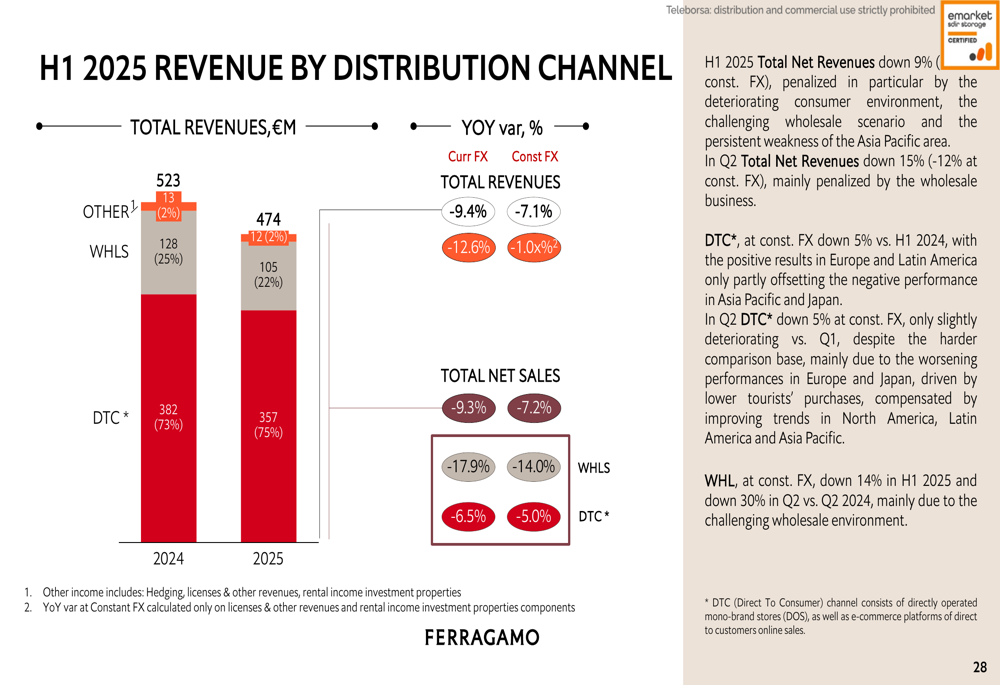
Geographically, all regions showed negative growth, with Asia Pacific (APAC) experiencing the largest decline at 9.3%, followed by Europe, Middle East and Africa (EMEA) at 7.8%. North America, which now represents Ferragamo’s largest market at 31% of total sales, showed more resilience with a 3.9% decrease. Latin America performed relatively better when measured at constant exchange rates, with an 11.6% increase, though still showing a 3.5% decline at current rates.
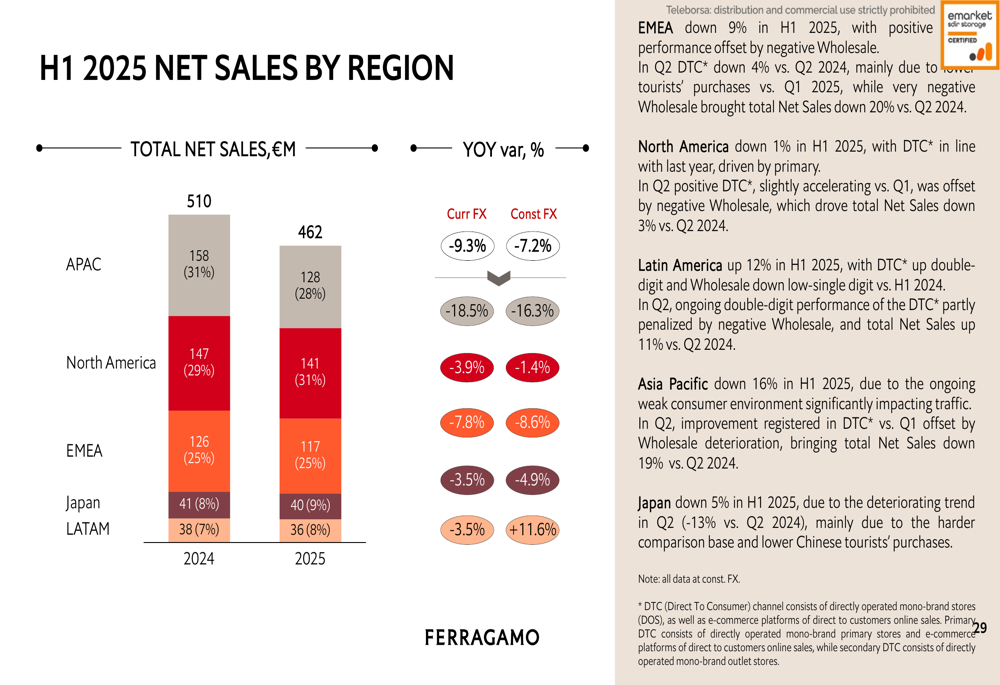
By product category, shoes – traditionally Ferragamo’s strongest segment – saw sales fall 15.5% to €202 million, while leather goods and handbags declined 2.2% to €199 million. These two categories together account for 87% of the company’s total sales.
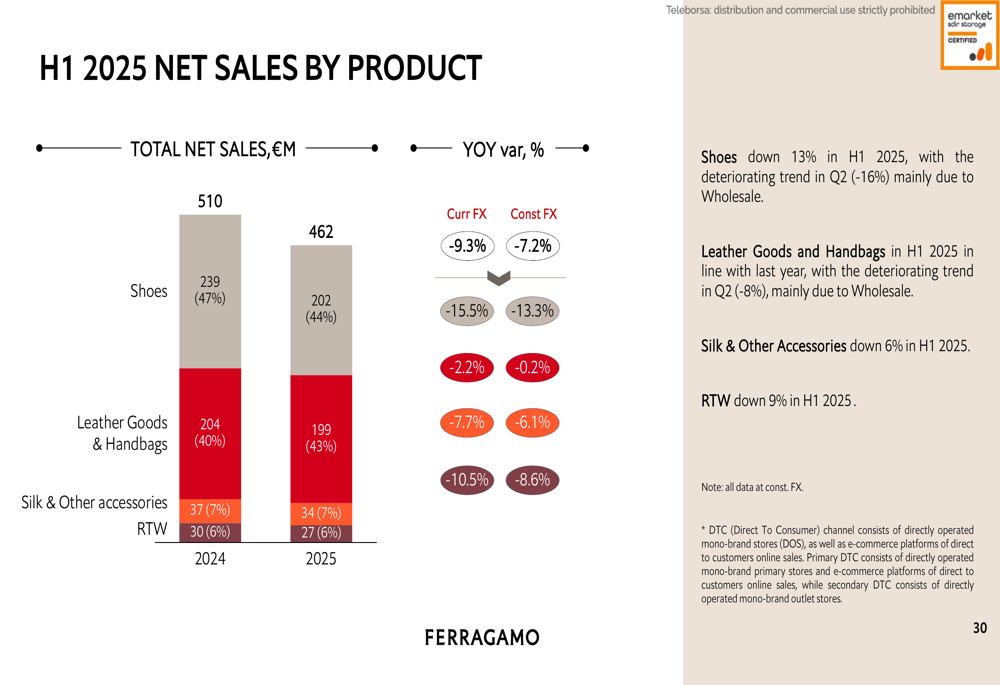
Strategic Reset Initiative
In response to these challenges, Ferragamo outlined a comprehensive strategic reset focusing on brand identity, product offering, and distribution channels. The company acknowledged a "challenging second quarter" and presented the results of a "comprehensive brand diagnostic" that will guide future actions.
Management emphasized a renewed focus on the brand’s unique heritage and identity, defining Ferragamo as representing "timeless Italian luxury with a twist" built on craftsmanship, innovation, and heritage. The company plans to leverage its distinctive codes and patterns, including the Gancino, bow, and signature prints.
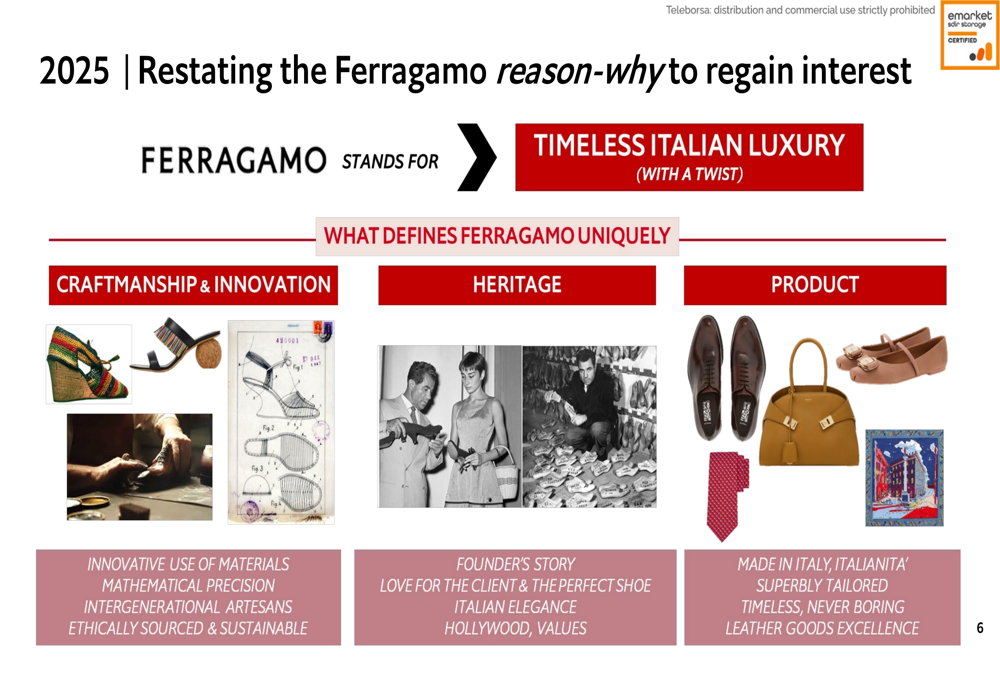
"We are celebrating a century of innovation powered by brand values," the company stated in its presentation, highlighting its pioneering spirit, craftsmanship, and Italian aesthetics as core differentiators in the competitive luxury market.
Marketing and Distribution Strategy
Ferragamo unveiled a new global advertising campaign structured in three chapters – "L’appuntamento," "Avventura," and "Doppio Sogno" – designed to reconnect with consumers by celebrating the brand’s unique identity between Florence and Hollywood. The company reported seeing improved performance in clienteling, newsletters, and digital channels, with a double-digit increase in traffic to its e-commerce platform.
The presentation highlighted several high-profile marketing initiatives, including participation in The Met Gala, a collaboration with Porsche Italia celebrating the automaker’s 40th anniversary, and the launch of the "Back to Earth" sustainable capsule collection, reinforcing the company’s commitment to sustainability.
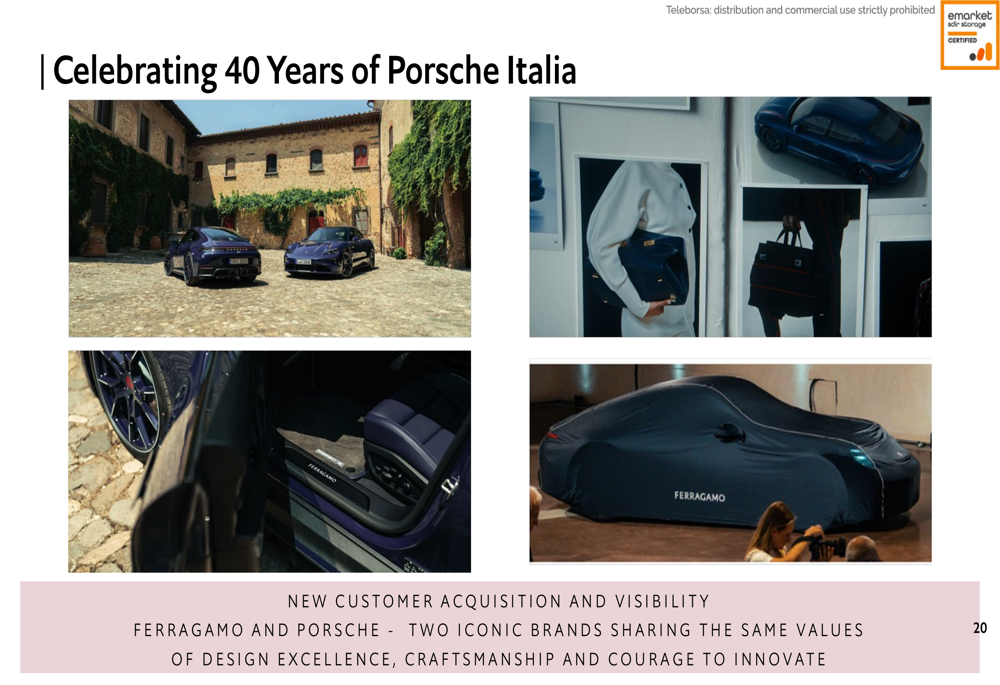
Ferragamo is also focusing on elevating its in-store experience with new store concepts implemented in key locations including South Korea, China, Las Vegas, and Frankfurt. The retail evolution strategy emphasizes window and product rotation, accessories focus, and cross-category displays to improve image and drive cross-selling opportunities.
Sustainability Achievements
Despite financial challenges, Ferragamo highlighted several environmental, social, and governance (ESG) achievements, including receiving a Grade A- in the CDP Climate Change questionnaire and being named among the top 10 Italian companies overall in the Financial Times and Statista’s 2025 list of Europe’s Climate Leaders. The company also noted that its new Net Zero by 2050 targets have been approved by the Science Based Target (NYSE:TGT) Initiative.
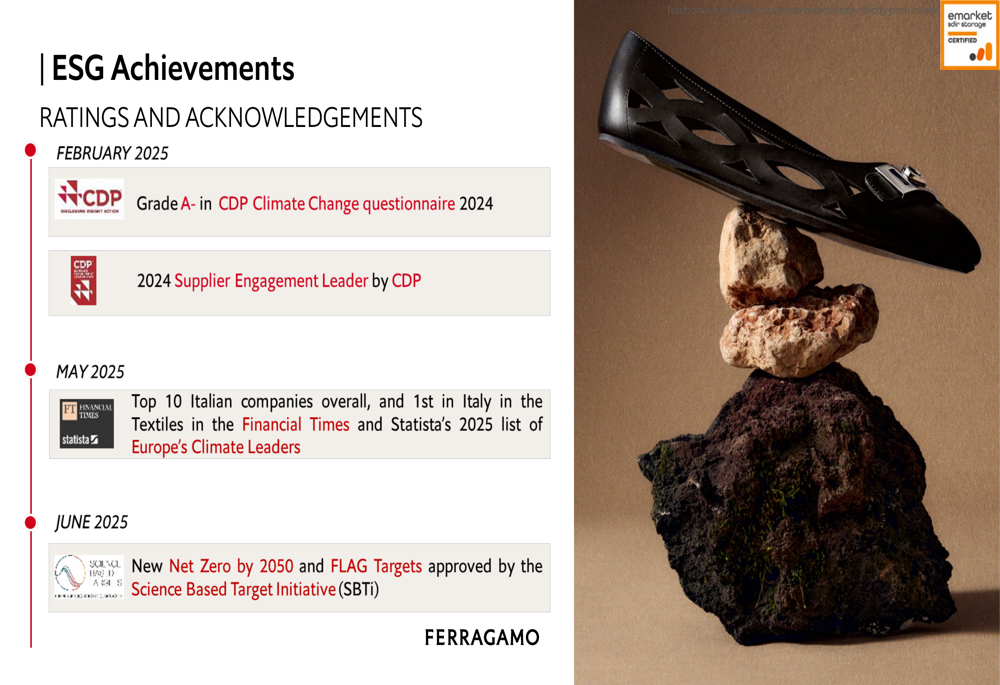
Outlook and Challenges
While Ferragamo presented an ambitious strategic reset, the presentation did not provide specific financial guidance for the remainder of 2025 or beyond. The company indicated that tangible changes from its strategic initiatives will begin to take effect by the end of the year, with more substantial impacts expected in 2026.
The significant decline in profitability and continued revenue erosion across all markets suggest Ferragamo faces substantial challenges in reversing its current trajectory. The luxury sector as a whole has experienced headwinds in 2025, particularly in China, but Ferragamo’s performance indicates company-specific issues that the new strategic direction aims to address.
As the company implements its strategic reset focusing on brand heritage, product innovation, and distribution optimization, investors will be watching closely for signs of stabilization in sales and a return to profitability in upcoming quarters.
Full presentation:
This article was generated with the support of AI and reviewed by an editor. For more information see our T&C.
